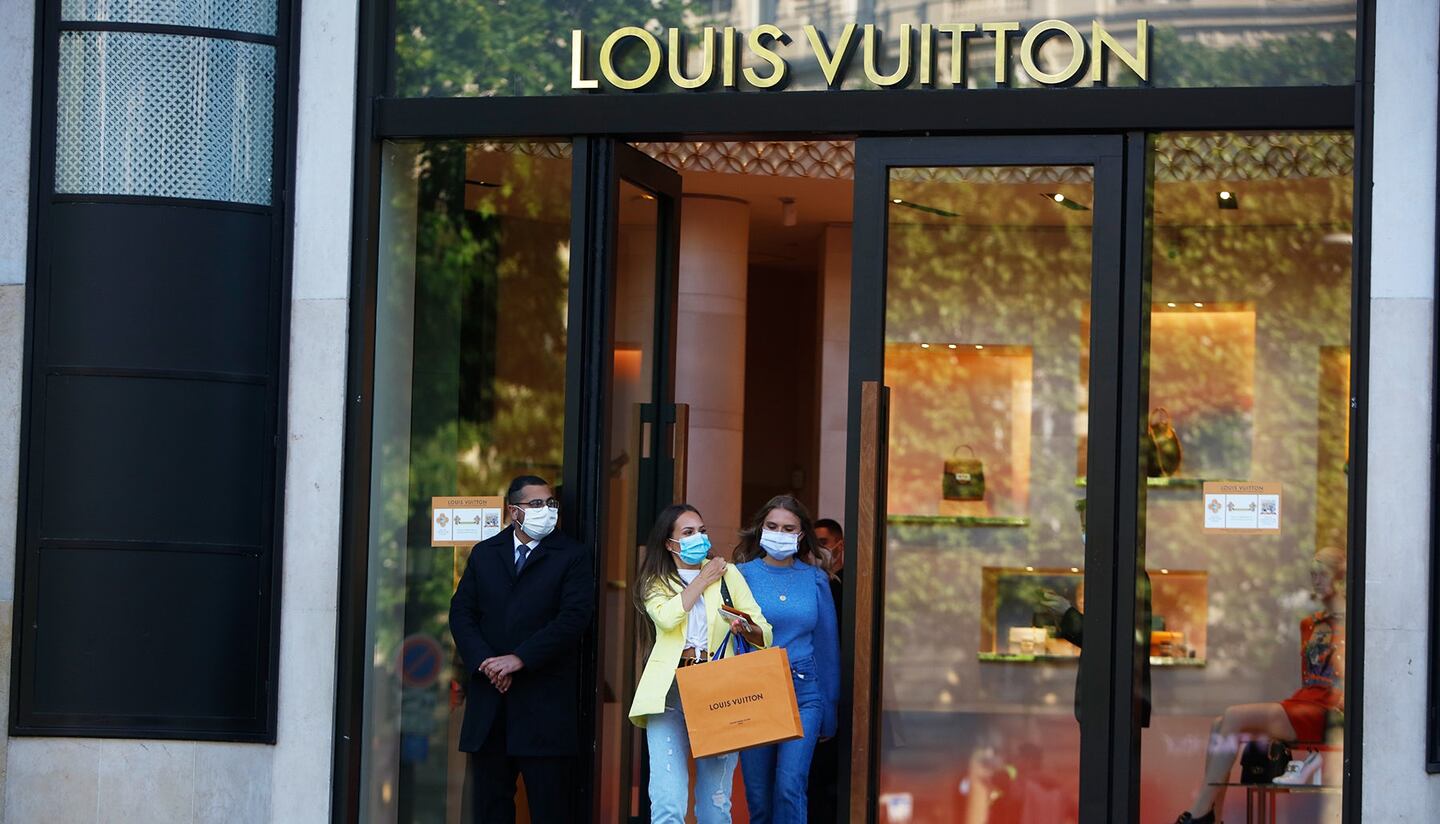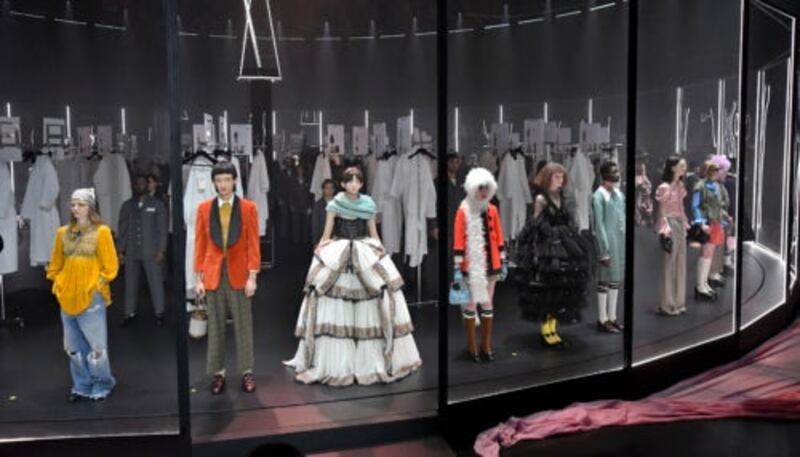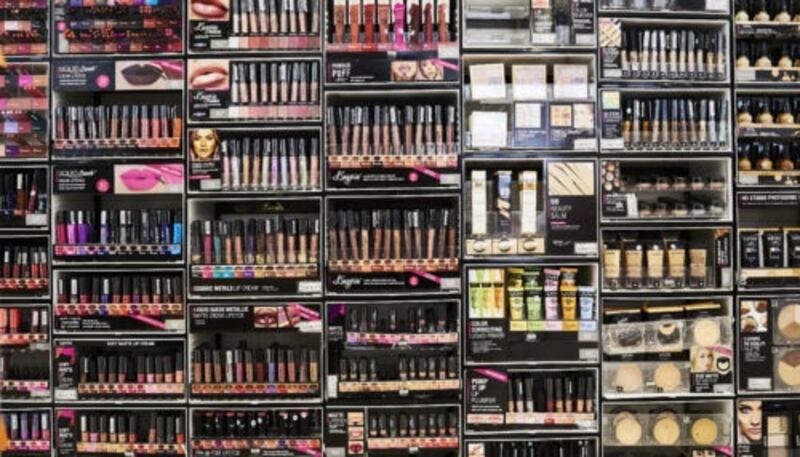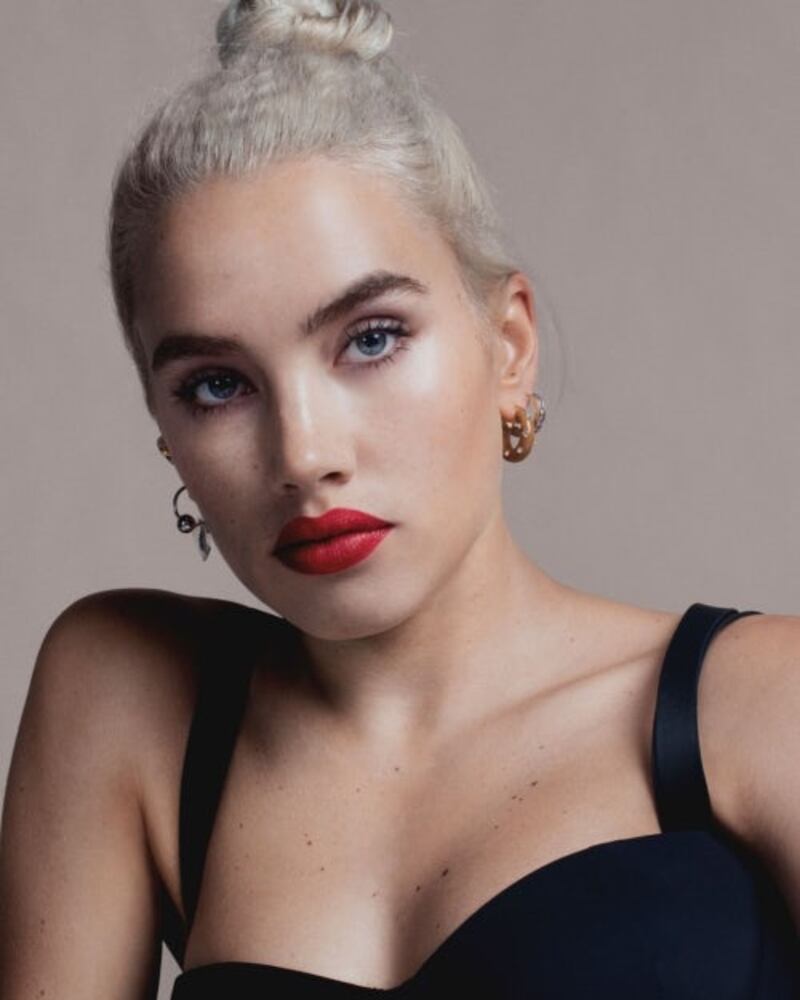
The Business of Fashion
Agenda-setting intelligence, analysis and advice for the global fashion community.

Agenda-setting intelligence, analysis and advice for the global fashion community.

Hello BoF Professionals, your exclusive 'This Week in Fashion' briefing is ready, with members-only analysis on the key topic of the week and a digest of the week's top news.
We're only a few months into the Covid-19 crisis and already the coronavirus, which causes the deadly disease, and measures to control its spread have disrupted supply chains, forced store closures and crushed consumer demand, creating a near state of emergency across the fashion world. The sector is expected to contract by 27 percent to 30 percent this year, according to the Coronavirus Update to The State of Fashion 2020 report by The Business of Fashion and McKinsey & Company.
But as lockdowns ease and stores reopen in Asia, Europe and the United States, fashion executives trying to make sense of the new normal and plan ahead find themselves facing two fundamental questions: When will the recovery come? And what will it look like? For the moment, nobody knows. Yet the answers to the riddle are bound to five important questions.
What Shape Will the Economic Recovery Take?
ADVERTISEMENT
While the effective reproduction number (or “R” factor) of Covid-19 is falling in key markets in response to lockdowns designed to flatten the growth curve of the pandemic, the global economy has already taken a tremendous hit from several weeks of forced hibernation. And despite the absence of any underlying economic malady and the outlier optimism of economists like Paul Krugman, a rapid, V-shaped recovery seems unlikely, according to most experts.
This week, unemployment claims in the United States, the world’s largest consumer market, topped 40 million after another 2.1 million people applied for government benefits, providing more evidence that the American economy is sinking further into crisis. Jerome Powell, the chairman of the country’s central bank, has warned that economic suffering “could stretch through the end of next year,” with most economists projecting a gradual U-shaped recovery or even worse, an L-shaped trajectory with economic activity, having fallen fast, remaining low.
In China, the world's second-largest consumer market and by far the primary driver of luxury sector growth, the economy shrank by 6.8 percent in the first quarter of 2020, its first contraction since the country began tracking quarterly GDP figures in 1992. But China's leadership has managed the epidemic better than Western governments and the country's industrial production has rebounded much faster than most economists expected, according to data released by the National Bureau of Statistics. And yet, consumption patterns have not matched the surge in production, suggesting that China may be headed for a W-shaped trajectory whereby the economy seems to bounce back quickly at first, but then dips a second time before a more sustainable recovery takes hold.
Will Consumer Spending Return?
If China is any indication, consumer spending may lag a wider rebound in economic activity as the pandemic and resulting economic contraction take a psychological toll on shoppers, who have become more thrifty and are reluctant to return to pre-crisis spending levels, with dire implications for the fashion sector, which depends on optimism to drive discretionary purchases.
Thus far, the rebound in luxury sales since the relaxing of social distancing measures in Mainland China has been impressive — at least at first glance. Closer inspection reveals that, because Chinese consumers historically do only about one-third to half of their luxury spending at home, Mainland sales would roughly have to double or triple to make up for revenue lost due to a virtual zero-ing of overseas travel to shopping meccas like Paris and London.
In the West, which was hit harder by the pandemic, consumers are unlikely to return to fashion stores as quickly as in China, especially when historical appetite for luxury goods is lower, economic recovery will almost certainly be shakier and the prospect of a second wave of infections more probable. For those in virus hotspots, stores fitted with new health and safety features may simply serve as a grim reminder of the possible biohazard lurking within.
In the United States, luxury consumers who have not lost their jobs or faced pay cuts and may have money to spend could nonetheless suffer a psychological hit from their higher exposure to plummeting equity markets, despite the recent uptick. They may also feel an added guilt factor that prevents them from shopping when so many of their fellow citizens have been hit hard and don’t have a European-style safety net to shield them from the brunt of the impact.
ADVERTISEMENT
Who Will Save Smaller Labels?
Though dominated by supergroups like LVMH and Kering, fashion is a long tail industry, made up of thousands of small and medium-sized businesses. The big conglomerates have the capital to ride out the crisis, while the very smallest labels, with tiny overhead costs, may also find ways to push through. But without sufficient access to funding, many small and medium-sized players may struggle to survive, with long-term consequences for the post-recovery landscape.
Governments have unfurled programmes offering billions of dollars in loans to small and medium-sized firms. But too often these loans have been challenging to access and the total sums, though significant, have proved too small to address the full scale of the crisis. Grants sponsored by regional fashion councils have also been insufficient.
Consumer spending may lag a wider rebound in economic activity as the pandemic takes a psychological toll on shoppers.
Some high potential businesses (overvalued direct-to-consumer labels, fashion-tech platforms and high-end designer businesses alike) without the capital structures to navigate the downturn may become targets for opportunistic acquisitions by large groups who could bring their largesse and expertise to the table and accelerate growth.
But unless more is done, the recovery may simply never come for a large number of small and medium-sized fashion businesses facing existential threats.
How Will the Battle with Landlords Play Out?
After week of lockdowns, many fashion retailers are battling their landlords over rent payments, which could make a material difference to major players with large store networks. Macerich, the third-largest owner and operator of shopping centres in the US, said last week that they collected only about 26 percent of rent due in April and 18 percent of rent due in May.
For now, tenants can get away with deferring or even skipping rent payments under the cover of government moratoriums on evictions, and sources say deferrals and 1-to-2-month abatements on rent are becoming common. But things may escalate this autumn.
ADVERTISEMENT
Many retailers are seizing the opportunity to renegotiate their rental agreements, with some pushing for low fixed monthly rates supplemented by revenue-sharing provisions knowing that by the time the recovery comes, there will be a glut of retail real estate that landlords will struggle to fill, lowering rents even for prime properties. What deals fashion retailers are able to strike could materially impact what the recovery looks like.
Will the Fashion System Really Change?
In recent weeks, the fallout from the pandemic has prompted fashion players big and small to re-evaluate the traditional system — conceived for a pre-internet, pre-globalised era — that has long governed the industry's approach to developing, showing, delivering and discounting collections. These changes — first proposed by a forum fronted by Belgian designer Dries Van Noten and a group facilitated by BoF — could bring real economic benefit to a fashion industry that has long suffered from misalignment between collection deliveries and real-world seasons, confusion over the purpose of fashion shows in a digital world, and an addiction to competitive discounting. But their fate ultimately depends on adoption by the industry's biggest groups.
This week, Gucci joined the chorus of brands and retailers calling for change, announcing its intention to go seasonless and scale back shows to twice per year. Last month, Kering stablemate Saint Laurent announced its intention to skip Paris Fashion Week this September and reshape its schedule for showing collections for the rest of the year. But LVMH, the world's largest luxury group, which owns Louis Vuitton, Dior and Fendi, has been noticeably absent from the debate. And yet its endorsement could genuinely help speed fashion's recovery.
— Additional reporting contributed by Cathaleen Chen.
THE NEWS IN BRIEF
FASHION, BUSINESS AND THE ECONOMY

Gucci Autumn/Winter 2020 show at Milan Fashion Week | Source: Getty Images
Gucci to go seasonless, show twice per year. The Kering-owned megabrand joins stablemate Saint Laurent in breaking with the conventional fashion calendar. "I will abandon the worn-out ritual of seasonalities and shows to regain a new cadence, closer to my expressive call," wrote designer Alessandro Michele in a diary entry posted to Gucci's Instagram account. The move comes as a growing chorus of designers and retailers call for overhauling the traditional fashion system.
Prada said sales up more than 10 percent in China. Co-Chief Executive Patrizio Bertelli told Bloomberg he has no plans to delist the company. The uptick in sales is still far from a complete recovery, Bertelli said, but he is hopeful that demand will return worldwide in the coming months. "We are working on new products, on expanding our sale network, on making the most of digital technology," he said.
Ralph Lauren posts worse-than-expected loss. The American brand has been hit hard by the economic fallout from Covid-19, with net revenue declining 15.4 percent to $1.27 billion in the fourth quarter. The company reported a net loss of $249 million. While stores are reopening in the US, Ralph Lauren expects to see a hit to its fiscal 2021 results as consumer demand for luxury goods is likely to remain low for some time.
Abercrombie & Fitch suffers steep losses. Net sales fell 34 percent to $485.4 million in the first quarter as stores remained shut. The closure of Abercrombie's recently remodelled stores and past fashion mishaps have slowed growth both at Hollister and its flagship clothing brand. However, Abercrombie's digital sales were up 25 percent as online shoppers looked to loungewear and knits as well as Gilly Hicks' new activewear under lockdown.
Hugo Boss sees recovery in third quarter at earliest. The German suit maker warned it expects second-quarter sales to fall by at least 50 percent. Hugo Boss has been particularly hard hit by ongoing store closures and restrained consumer sentiments in the US and Europe, which account for around 85 percent of the brand's sales. The brand has now reopened all its stores in China.
Nordstrom sales plunge nearly 40 percent in quarterly sales. The department store chain's digital sales rose only 5 percent in the same period, with total net sales dropping to $2.03 billion from $3.35 billion. Nordstrom's net loss came in at $521 million in the first quarter ended May 2, compared with a profit of $37 million a year earlier. American department stores have been particularly hard hit by the crisis, with J.C. Penney and Neiman Marcus having both filed for bankruptcy in recent weeks.
Harrods to open outlet store. Facing an unprecedented volume of unsold goods after weeks of Covid-19 lockdowns, the British department store is launching an off-price outlet at London's Westfield White City shopping mall. The new 80,000-square-foot store will house the retailer's traditional summer sale, allowing the iconic Knightsbridge flagship to focus on new full-price products and better preserve its luxury image.
US consumer confidence stabilises amid reopening optimism. Analysts forecast a significant pick-up in economic activity in the third quarter but warn a return to pre-crisis levels remains nowhere in sight. A consumer confidence survey conducted by non-profit organisation The Conference Board indicates that 43 percent of respondents expect better business conditions in six months. Even so, recovery is likely to be slow.
UK to reopen thousands of shops in easing of coronavirus lockdown. Prime Minister Boris Johnson is eager to restart the British economy. He announced in a news conference that outdoor markets will be allowed as of June 1, while non-essential retail shops selling clothes and shoes can expect to reopen on June 15 if they complete a risk assessment.
Forty Five Ten's future is in limbo after cutting staff and closing stores. The multi-brand retailer hasn't announced plans to reopen and is operating with a skeleton crew, weeks after the lockdown was lifted in its home state of Texas. The company is down to about five employees from nearly 100 before the pandemic with President and Chief Creative Officer Kristen Cole being among those laid off. Digital sales have also been halted on its website and on Farfetch.
Adidas and Allbirds join forces. The footwear competitors are partnering with the goal of creating a sports shoe with the world's lowest carbon footprint and bringing it to market by summer 2021. Allbirds has made reducing carbon emissions a priority since 2019 by partnering with Clean Agency to calculate carbon ratings for each of its products, and Adidas has pledged to become carbon neutral by 2050.
THE BUSINESS OF BEAUTY

Products on display inside an Ulta Beauty store | Source: Getty Images
Ulta Beauty first-quarter comparable sales drop 35 percent. Temporary store closures and health-anxious shoppers have significantly impacted the beauty retailer's earnings. Net sales were down to $1,173.2 million from $1,743.0 million a year earlier, a decline of 32.7 percent. Ulta Beauty has already reopened 300 of its stores and is in the process of reopening many more. It is also offering curbside pick-up services in over 800 of its stores.
Cosmetic manufacturers are struggling to survive the crisis. A new report by nonprofit trade association Independent Cosmetic Manufacturers and Distributors indicates that 30 percent of its members said they would be out of business in 90 days if the beauty business does not pick up. In order to survive, some manufacturers have pivoted to hand sanitiser while others are focusing on essentials and avoiding riskier products.
Beauty brands bet on virtual consultations. Online skincare and make-up consultations which have been offered by the likes of Glow Recipe, Huda Beauty and Dermalogica during lockdown are set to become a permanent fixture in the beauty industry. Virtual consultation tools encourage higher conversion rates and offer direct links to commerce, injecting the interactive element often lost in the digital shopping experience.
PEOPLE

Isamaya Ffrench | Source: Burberry
Isamaya Ffrench joins Burberry as beauty director. Make-up artist and Dazed Beauty Co-Founder Isamaya Ffrench will join Burberry as the brand's new global beauty director, with her first campaign for the brand set to drop this autumn. Ffrench has previously collaborated with a number of luxury brands including YSL Beauté and Tom Ford Beauty. In 2019, she was appointed Christian Louboutin Beauté's global makeup ambassador.
Michele Norsa returns to Ferragamo. The Italian luxury group has called back former Chief Executive Michele Norsa to act as executive director as part of a wider restructuring to help the company weather the pandemic. Under the new structure, Norsa will manage Ferragamo's on-going revamp, while the group's majority shareholder, family holding Ferragamo Finanziaria, will focus on strategic planning. Norsa previously left Ferragamo in 2016 after 10 years at the brand.
Johnny Coca named women's fashion leather goods director at Louis Vuitton. Former Mulberry designer Johnny Coca has been appointed director of women's fashion leather goods at Louis Vuitton effective June 2. Coca returns to the luxury fashion house where he began his career as a leather goods designer before going on to work for Bally, Celine and Mulberry.
MEDIA AND TECHNOLOGY
Boohoo buys out PrettyLittleThing shareholders for $331 million. The UK e-commerce giant has bought the remaining 34 percent of shares in the PrettyLittleThing brand using a combination of shares totalling £107.9 million and cash of £161.9 million. After the purchase Boohoo will retain over £350 million, leaving it in a strong position for future acquisitions. Shares in Boohoo, which is now valued at £4.14 billion, have jumped 42 percent over the last year.
Alibaba extends its reach in China. The company is advertising for over 100,000 jobs and offering billions of dollars in loans to small and medium-sized businesses. While most companies have been negatively affected by the coronavirus crisis, Alibaba has seen demand for online shopping shoot higher. Just last week, Alibaba reported increases of 21 percent in quarterly revenue and 19 percent in core commerce sales, beating estimates.
Compiled by Daphne Chouliaraki Milner.
BoF Professional is your competitive advantage in a fast-changing fashion industry. Missed some BoF Professional exclusive features? Click here to browse the archive.
The rental platform saw its stock soar last week after predicting it would hit a key profitability metric this year. A new marketing push and more robust inventory are the key to unlocking elusive growth, CEO Jenn Hyman tells BoF.
Nordstrom, Tod’s and L’Occitane are all pushing for privatisation. Ultimately, their fate will not be determined by whether they are under the scrutiny of public investors.
The company is in talks with potential investors after filing for insolvency in Europe and closing its US stores. Insiders say efforts to restore the brand to its 1980s heyday clashed with its owners’ desire to quickly juice sales in order to attract a buyer.
The humble trainer, once the reserve of football fans, Britpop kids and the odd skateboarder, has become as ubiquitous as battered Converse All Stars in the 00s indie sleaze years.